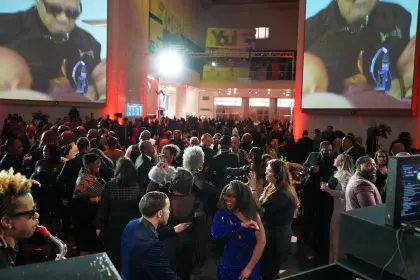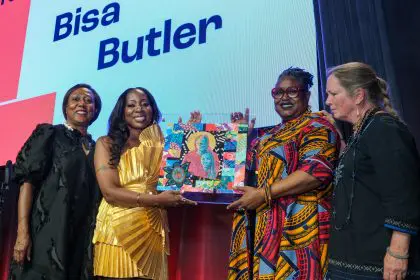
The Harlem School of the Arts is a cultural touchstone in New York City and a long-standing bastion for Black creativity and expression. On Oct. 5, the school will be celebrating its 50th anniversary with a 50th Year Anniversary Gala Kickoff, which will be held in the Grand Ballroom at The Plaza, and luminaries like Alicia Keys, Cicely Tyson and Kehinde Wiley will be on-hand to commemorate the auspicious occasion. Eric Pryor is the president of the HSA and he’s understandably excited about both the celebration and the outlook for one of Harlem’s greatest treasures.
“When you look at a kickoff of a 50-year anniversary, that’s a major historic milestone. To be positioned as a cultural provider of world class art training for that period of time is pretty incredible,” he says. “For me, as an artist and someone who has degrees in painting and understanding the rich cultural legacy that Harlem plays in the African American community, it’s awesome.”
In the ever-changing cultural landscape of Harlem and New York City, in general, Pryor believes that the Harlem School of the Arts carries the mantle for the arts in the Black community and he wants everyone to take full advantage.
“One of the things that is critical for moving forward is continuing to position it as a world class cultural center and destination that offers life-long learning through the arts for people of all ages,” said Pryor. “Primarily, what we’ve been doing is offering arts training to school aged children. But we own a 37,000 sq ft facility. Which means, when children are not here — during the day in the school year — there are opportunities to work with adults.”
Recognizing leaders for arts advocacy, philanthropy and community leadership, the 50th anniversary gala will spotlight honorees like Jessye Norman, Cicely Tyson, Kehinde Wiley, Alicia Keys and her mother Terria Joseph, Steinway & Sons, and the Honorable Keith L.T. Wright. Pryor is ecstatic about the future of the Harlem School of the Arts. His passion is reflected in his outlook for the school and for the community. He gets his greatest joy from watching young artists develop and blossom into their whole selves.
“Seeing that young person finding their voice and having that opportunity to express themselves and speak to culture on their terms and how they say it, that, for me, has always been a magical moment. To see that dancer do their thing or that young vocalist or painter — doesn’t matter the discipline, just engaging in and mastering the process. I love seeing how powerful it is for one to recognize how to take it from the page to the stage,” he said.
















